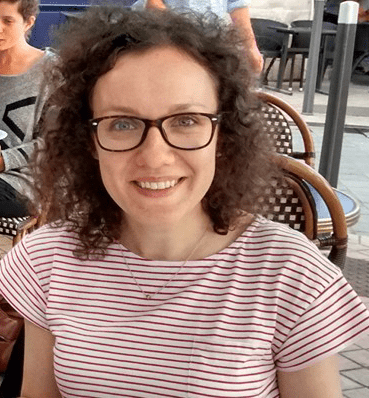Venue: Centre Broca Nouvelle-Aquitaine / Salle de conférence
 Aleksandra Ichkova
Aleksandra Ichkova
CNRS UMR5287, Institut de Neurosciences Cognitives et Intégratives d’Aquitaine (INCIA), University of Bordeaux
PhD supervisor:
Jérôme Badaut
Directeur de recherche CNRS
Team leader « Brain molecular Imaging » / INCIA
Abstract
Traumatic brain injury (TBI) is the first cause for emergency department visits in the pediatric population. Regardless of the severity of TBI, pediatric patients suffer long-term cognitive and emotional impairments but the underlying cellular and molecular mechanisms are still poorly understood and there are no effective treatments available. The neurovascular unit is composed by blood vessels, neurons and astrocytes. Astrocytes are crucial for various physiological functions of this unit such as brain homeostasis and neurovascular coupling. In injuries astrocytes become “reactive”, and this “astrocytopathy” can impact their physiological roles and worsen the outcome after injury.
We investigated the astrocytopathy in juvenile TBI and hypothesized that: (1) reactive astrocytes contribute to spread of edema through connexin gap junctions after juvenile moderate TBI; (2) astrocytopathy also develops after juvenile mild TBI with calcium changes that could contribute to (3) impaired vascular reactivity, all of which impacts the behavioral outcome after injury.
We showed that:
- Reducing astrocytopathy by downregulating connexin 43 improved behavioral outcome after juvenile moderate TBI, but did not impact the spread of edema.
- Astrocytes became reactive and underwent morphological changes after juvenile mild TBI with disturbances in purinergic-calcium signaling related to expression changes of the water channel aquaporin 4 (AQP4).
- Major vascular dysfunction developed after juvenile mild TBI with functional and morphological changes of the intraparenchymal vessels that paralleled behavioral impairments and preceded axonal damage after injury.
This work brings new insights in the pathophysiology of juvenile TBI and opens prospects for developing therapeutics targeting astrocytopathy after injury.
Key words: traumatic brain injury, astrocytes, calcium, aquaporin 4, connexin 43, blood vessels
List of publications
- Ichkova A., Rodriguez-Grande B., Aussudre J., Fournier, ML., Obenaus A., Badaut J., Juvenile mild traumatic injury impacts “invisible” intracortical blood vessels properties beyond blood-brain barrier dysfunction (in preparation)
- Ichkova A., Fukuda, A. M., Nishiyama, N., Paris G., Badaut J. (2019) Small interference RNA targetting connexin-43 improves motor function and limits astrogliosis. ASN Neuro, under revision
- Clément, T., Lee J., Ichkova, A., Rodriguez-Grande, B., Fournier, ML., Aussudre, J., Ogier, M., Haddad, E., Canini F., Koehl, M., Abrous, N., Obenaus, A., Badaut, J. (2019) Juvenile mild traumatic brain injury elicits distinct spatiotemporal astrocyte responses, Glia, under revision
- Rodriguez-Grande, B., Obenaus, A., Ichkova, A., Aussudre, J., Bessy, T., Barse, E., Hiba B., Catheline, G., Barriere, G., Badaut, J. (2018). Gliovascular changes precede white matter damage and long-term disorders in juvenile mild closed head injury. Glia. doi:10.1002/glia.23336
- Jullienne, A., Fukuda, A. M., Ichkova, A., Nishiyama, N., Aussudre, J., Obenaus, A., & Badaut, J. (2018). Modulating the water channel AQP4 alters miRNA expression, astrocyte connectivity and water diffusion in the rodent brain. Sci Rep, 8(1), 4186. doi:10.1038/s41598-018-22268-y
- Ichkova, A., Badaut J. (2017) New biomarker stars for traumatic brain injury. J Cereb Blood Flow Metab, 37(10), 3276-3277. doi:10.1177/0271678X17724683
- Rodriguez-Grande B., Ichkova A., Lemarchant. S., Badaut J., (2017) Early to long-term alterations of CNS barriers after traumatic brain injury: considerations for drug development. AAPS, 19(6):1615-1625. doi: 10.1208/s12248-017-0123-3
- Ichkova, A., Rodriguez-Grande, B., Bar, C., Villega, F., Konsman, J. P., & Badaut, J. (2017). Vascular impairment as a pathological mechanism underlying long-lasting cognitive dysfunction after pediatric traumatic brain injury. Neurochem Int. doi:10.1016/j.neuint.2017.03.022
- Jullienne, A., Obenaus, A., Ichkova, A., Savona-Baron, C., Pearce, W. J., & Badaut, J. (2016). Chronic cerebrovascular dysfunction after traumatic brain injury. J Neurosci Res, 94(7), 609-622. doi:10.1002/jnr.23732
Jury
- Mme NADJAR Agnès, Maître de Conférences, Université de Bordeaux
Président - Mme HEURTEAUX Catherine, Directeur de recherche CNRS, Université Côte d’Azur
Rapporteur - Mme ALI Carine, Professeur des Universités, Normandie Université
Rapporteur - M NÄGERL U. Valentin, Professeur, Université de Bordeaux
Examinateur - M MARCHI Nicola, Chargée de recherche CNRS, Université de Montpellier
Examinateur - Mme GUIBERT Christelle, Chargée de recherche INSERM, Université de Bordeaux
Invité

